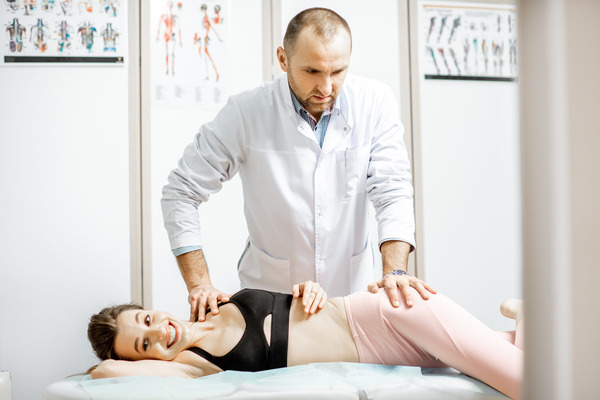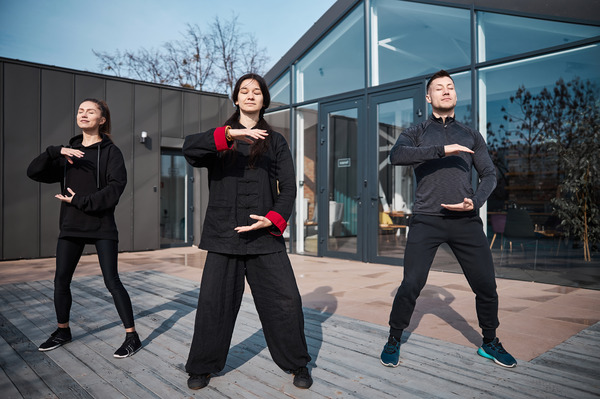
Treating Enlarged Prostate (BPH) Naturally
- Natural Healing
- August 8, 2023
- No Comment
- 12 minutes read
Prostatic disorders, including benign prostatic hyperplasia (BPH) and prostatitis, are common conditions that can significantly impact men’s quality of life. While traditional treatments such as medications and surgeries are commonly employed, medications can cause side effects, and surgeries have their own set of risks. Because of that, alternative therapies have gained attention for their potential benefits. In this article we will discuss alternative treatments that have been found beneficial for some individuals with prostate disorders.
- Acupuncture:
Acupuncture involves the insertion of thin needles into specific points on the body to stimulate healing. Studies have shown that acupuncture can effectively reduce symptoms of pain and urinary dysfunction associated with prostatic disorders such as benign prostatic hyperplasia (BPH) and prostatitis. (1) (2)
- Herbal Medicine:
- Saw Palmetto: It is commonly used in the treatment of symptoms related to benign prostatic hyperplasia. The active component is found in the fruit of the American dwarf palm tree. Studies have demonstrated the effectiveness of saw palmetto in reducing symptoms associated with benign prostatic hyperplasia. There are no known drug interactions with saw palmetto, and reported side effects are minor and rare. No data on its long-term usage are available. The herbal product also has been used to treat chronic prostatitis, but currently there is no evidence of its efficacy. (3) (4)
- Pygeum africanum (an extract of an African prune tree)
A study on the use of Pygeum africanum for the treatment of benign prostatic hyperplasia (BPH) concluded that Pygeum africanum may be a useful treatment option for men with lower urinary tract symptoms (LUTS) associated with BPH. (5) - Stinging Nettle: In a clinical trial, 287 BPH patients who had been treated with stinging nettle (Urtica dioica) showed significant reduction in IPSS (International Prostate Symptom Score), serum PSA, and prostate size. (6)
- Cranberries: Cranberries are a red fruit with anti-inflammatory effects that are high in phytonutrients. These are known for improving bladder health. Men who received a cranberry supplement for six months demonstrated improvement in their BPH symptoms, according to a study published in the British Journal of Nutrition. Among the improved symptoms were: Improved urine flow rate, fewer night time bathroom visits, and reduced urgency to urinate. (7)
- The Violet Ray: The violet ray is an electrotherapy medical Appliance that emits high- frequency electricity and light. It is a hand-held device that comes with a variety of glass applicators that can be inserted into the base of the unit and used on the part of the body being treated. The basic construction of the Violet Ray was invented by Nikola Tesla in the late 1800s. It was very common in the early 1900s and used to treat a variety of health disorders, including prostatic disorders.
Although I’m not aware of any studies on the benefits of using the Violet Ray specifically for prostatic disorders, there is a possibility that treating the prostate with the Violet Ray could improve blood circulation in the prostate gland.
Improved blood circulation could potentially alleviate symptoms associated with prostatic disorders such as pain, and urinary difficulties. Because of the possibility mentioned above, researchers should consider revisiting the use of the violet ray for treating prostatic disorders. If proven to be effective, the violet ray has the potential to be a simple, effective, and inexpensive way to treat prostatic disorders without side effects.
As medical technology continues to advance, it is important not to overlook the potential benefits of older treatments that may have been dismissed too quickly. The Violet Ray is one such treatment that deserves further investigation.
Disclaimer:
The Violet Ray is not approved by the FDA for the treatment of prostatic disorders. This article is not endorsing any treatment with the Violet Ray or any other electrical appliance.
- Nutrition:
- Nutritional Supplements: For information on nutritional supplements, read “Dr. Jack’s Nutritional Supplement Regimen.” The article is available on this website.
- Vitamin D: According to data on the results of a review on vitamin D and benign prostatic hyperplasia (BPH),”Increasing intake of vitamin D from diet and supplements has shown a correlation with decreased BPH prevalence.” “Vitamin D analogues of up to 6000 IU/ day have shown to decrease prostate volume in BPH ” In addition, “among all the studies, there has not been any side effects or negative implications with increased vitamin D intake.” The study concluded, “The impact of vitamin D on prostate volume and BPH has shown promising results, thus proposing further studies on vitamin D and BPH be conducted.” (8) Discuss this study with your doctor before increasing your vitamin D intake. Also, ask your doctor about being tested for vitamin D deficiency. If you’re taking the Ultra Freeda multivitamin multimineral supplement mentioned in” Dr. Jack’s Nutritional Supplement Regimen,” you’re already getting 400 IU of vitamin D. In addition, read “The Health Benefits of Fresh Air and Sunlight” for information on vitamin D and sunlight exposure.
- Dietary Modifications: Eating Foods rich in phytoestrogens, like soybeans, flax seeds, and lentils, may have a positive effect on prostate health. Also, incorporating antioxidant-rich foods in your diet, such as fruits and vegetables, berries, tomatoes, and leafy greens, may be beneficial. In addition, consuming foods rich in omega-3 fatty acids, such as salmon, raw walnuts, and raw pumpkin seeds, may have anti-inflammatory properties.
- Exercise: In a Harvard Medical School study, it was found that men who were more physically active were less likely to suffer from BPH. Even low-to-moderate-intensity exercise, such as walking regularly at a modern pace, was beneficial. Italian researchers examined men with prostatitis in a different study. The study came to the conclusion that men who walked briskly three times a week for 18 weeks felt better and reported less prostatitis pain. (9) Always consult your physician before starting an exercise regimen. He or she can assist you in creating a routine based on your level of fitness and health.
- Kegel Exercises, also referred to as pelvic floor exercises, can aid with urine incontinence and help manage prostate pain and swelling that occur with prostatitis and BPH. For more information on kegel exercises, click on reference number 10 at the end of this article. As always, consult with your doctor before attempting any exercises. (10)
- Heat Therapy: Applying a hot water bottle to the area of discomfort or taking a warm bath may help alleviate the discomfort associated with prostatic disorders. Consult with your healthcare provider before applying heat or any other therapy to your prostate.
- Yoga and Meditation: Engaging in regular yoga and meditation practices may help reduce stress and promote relaxation, which may reduce the need to urinate.
DISCLAIMER:
Since everyone’s nutritional needs may vary, consult with a qualified healthcare professional before taking any supplements.
References:
Liu YL, Wang XD, Huang SF. Observations on the Therapeutic Effect of Electroacupuncture on Urinary Retention Due to Prostatic Hyperplasia [J]. Shanghai Journal of Acupuncture and Moxibustion, 2017(11):1318-1320.



